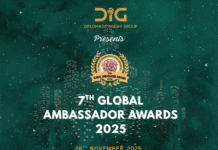Diplomacy is often called an art; having magic up the sleeve. But is this the reality or has it become a clever game where one country says one thing and does another.
There was a time when Kings used to send messages to stop wars, but now it’s about world leaders tweeting threats and getting photos with handshakes.
The very diplomacy that used to be conducted behind closed doors in big palaces, now it’s like a stage show, it unfolds under camera flashes. So the real question stays, has diplomacy evolved or only changed its form?
Origins of Diplomacy
We aren’t aware when human societies actually started to practice diplomacy, but it is safe to assume that they did from the very earliest start.
Let’s look back thousands of years ago, when there were no presidents, ambassadors, and peace summits, and diplomacy existed in a raw and ritualistic form. In Ancient Egypt, diplomacy was inked on papyrus scrolls and sent across deserts, and envoys would bear golden gifts.
Pharaohs would bring peace through royal marriages, not because they admired their neighbors, but because, in those times, war was expensive and unpredictable, so they would use the shield of marriage to prevent war.
The famous Amarna Letters, which were a collection of clay tablets from the 14th century BCE, are perhaps the earliest surviving evidence of diplomatic exchanges. But even they raise a question: Were these letters genuine gestures of goodwill and peace or subtle warnings that were cloaked in pleasantries?
Read More: To Understand Diplomacy, Let’s First Understand Diplomatic Missions
Whereas in Mesopotamian cities, such as Summer and Akkad, diplomacy was used to manage fragile alliances and negotiate ceasefire deals. Diplomacy in these times wasn’t just about politics, but it was also about religion and fear.
Then comes ancient China, which developed a diplomatic culture grounded in Confucian values of harmony, hierarchy, and respect. But diplomacy in imperial China also reflected a harsh truth that peace was often offered only after dominance was established.
The Tributary System wasn’t just diplomatic; in fact, it was a way to remind the smaller states who held the upper hand over them and who had the most power.
Greece, the one that gave us the earliest version of institutional diplomacy. The proxenos who acted as a protector of foreign citizens and conducted inter-city negotiations were common, even if they failed just as often as they succeeded.
Despite all of this, Greeks struggle with unity and trust, which shows that even the birthplace of reason found diplomacy complicated to master.
Medieval Diplomacy
Medieval diplomacy, the time when diplomacy left royal courts and entered cathedrals and castles. During the Medieval period, diplomacy transformed itself. In those times, most of the diplomatic talks happened behind closed doors of a castle or in religious institutions.
The Catholic Church sent out papal envoys, and Islamic Caliphates used ambassadors to negotiate treaties, trade, or even religious debates. It was the era when politics and religion were pretty much involved, and diplomacy served as a bridge between the two.
The Catholic Church wasn’t just a spiritual and religious force, but it also served as a diplomatic powerhouse. The Pope was to send envoys to kings, settle disputes, call for peace or war through papal bulls, and even decide who deserved divine favor.
Read More: Economic Diplomacy in the Digital Age
On the other hand, in the Islamic world, caliphates and sultanates were also good at diplomatic engagement. Envoys were sent with gifts, letters, and messages of peace or sometimes threats. Diplomatic ties were often used to build trade routes, form alliances, or delay invasions.
This period also saw the emergence of professional diplomats and messengers who would travel through unsafe and dangerous roads between kingdoms. Their missions were risky, and their one wrong word could get them killed.
In those times, there was no concept of embassies, no diplomatic immunity, and often no second chances. It wasn’t uncommon for a diplomat in that era to be held hostage, poisoned, or simply “disappear” if their message wasn’t well-received.
So being a diplomat back then meant risking your life in the name of peace that might never come. Secrecy was everything in those times; diplomatic engagements were never made public.
Emergence of Multilateral Diplomacy
Then comes the recent modern way of diplomacy, the multilateral diplomacy. The time when the world decided to talk, not alone but together, not secretly but publicly. That’s what multilateral diplomacy promised: no whispers, no secrets.
The concept of multilateralism wasn’t born out of peace and kindness but out of crisis. After seeing two world wars that killed millions of people and long periods of colonization that ruined the maps and territories. The world saw what happens when diplomacy fails, and that’s when countries started to negotiate at a bigger level, creating the UN to solve disputes and prevent wars through dialogue. But the loopholes exist even in newer modern diplomacy.
The UN General Assembly gave every country a voice and a vote, but the Security Council gave only a few countries real power, the veto power, which is often abused by these superpowers who think they rule the world. This one veto power can even fail diplomacy within seconds.
Read More: Appeal, Confuse, Bully: Trump’s Way of Diplomacy Explained
So, while the platform looks democratic, the power structure raises a valid question: Is multilateral diplomacy truly equal or drastically unequal? Apart from the UN, this era witnessed the emergence of regional organizations such as the European Union, ASEAN, NATO, African Union, platforms for multilateral diplomacy.
But the reality of multilateral diplomacy is harsh and painful; it’s like a win-or-lose game. When it works, multilateral diplomacy can stop wars, send peacekeepers, and build global agreements like the Paris Climate Accord. But when it fails, like during the Rwandan genocide, the Iraq War, or the current Israeli-Palestinian conflict, the whole world watches as diplomacy crumbles under pressure, ego, or silence.
The Evolution of “Old” and “New” Diplomacy
There was a time when diplomacy was all about secrets and negotiations behind closed doors, but today it’s open, it’s about tweets and publicity. So what has changed over these years? Did diplomacy get smarter and transparent, or did it get louder and easier to manipulate?
The concept of “old” diplomacy refers to the time when international relations were handled quietly, a time when diplomacy was exclusive only a small group of elites would sit at negotiating tables. Old diplomacy moved more slowly, but with precision. More like “slow and steady wins the race,” but this old diplomacy avoided public chaos, and at the same time, public accountability
Then comes the era of “new diplomacy”, a time in international relations where the public was as much included as much ambassadors were. This new diplomacy isn’t secretive; it doesn’t have to hide behind closed doors; in fact, it faces the public. This new diplomacy has several types in which governmental officials, as well as the public non non-governmental officials take part.
Read More: How Artificial Intelligence is Changing the Future of Global Diplomacy
This diplomacy is inclusive; it involves the public in shaping opinions. But while the audience has expanded, so have the challenges. Miscommunication spreads faster. Leaks are harder to contain. And with so many actors involved, who’s actually in charge? Critics argue that new diplomacy is all about style and trend, and there is no truth or content.
Despite all such criticism, one thing is sure: diplomacy no longer only belongs to the elites, but it belongs to everyone now.
Future of Diplomacy: Is it Promising?
The world is moving faster than ever. So what’s the future of diplomacy? Is it headed towards a smarter and peaceful future or an outdated and slow approach? In the future, diplomacy might not involve handshakes; in fact, it might involve encrypted apps and AI-generated dialogue. Nations already conduct high-level negotiations via secure video calls.
Foreign ministries run X (formerly Twitter) accounts like public relations firms. Some are even predicting a world where AI assists or even leads negotiations, analyzing risks, drafting agreements, and avoiding emotional bias, which raises the question: Can diplomacy even survive without human touch? Empathy, understanding, and sensitivity are not the skills that a machine is capable of. Some believe that diplomacy without emotion means negotiation without meaning.
So… Is the Future of Diplomacy Promising? It depends on several factors. It depends on whether we allow diplomacy to grow with purpose or let it drown in noise. It depends on whether the world leaders use technology to connect or to control. And it depends on whether we choose empathy and understanding over ego and dominance.
The future of diplomacy is not guaranteed and not even confirmed. It is not destined to succeed or doomed to fail. It is a tool, and just like how any tool operates, its value depends on how we use it and who holds it.
An IR student whose interest lies in diplomacy and current affairs and a part time debater






